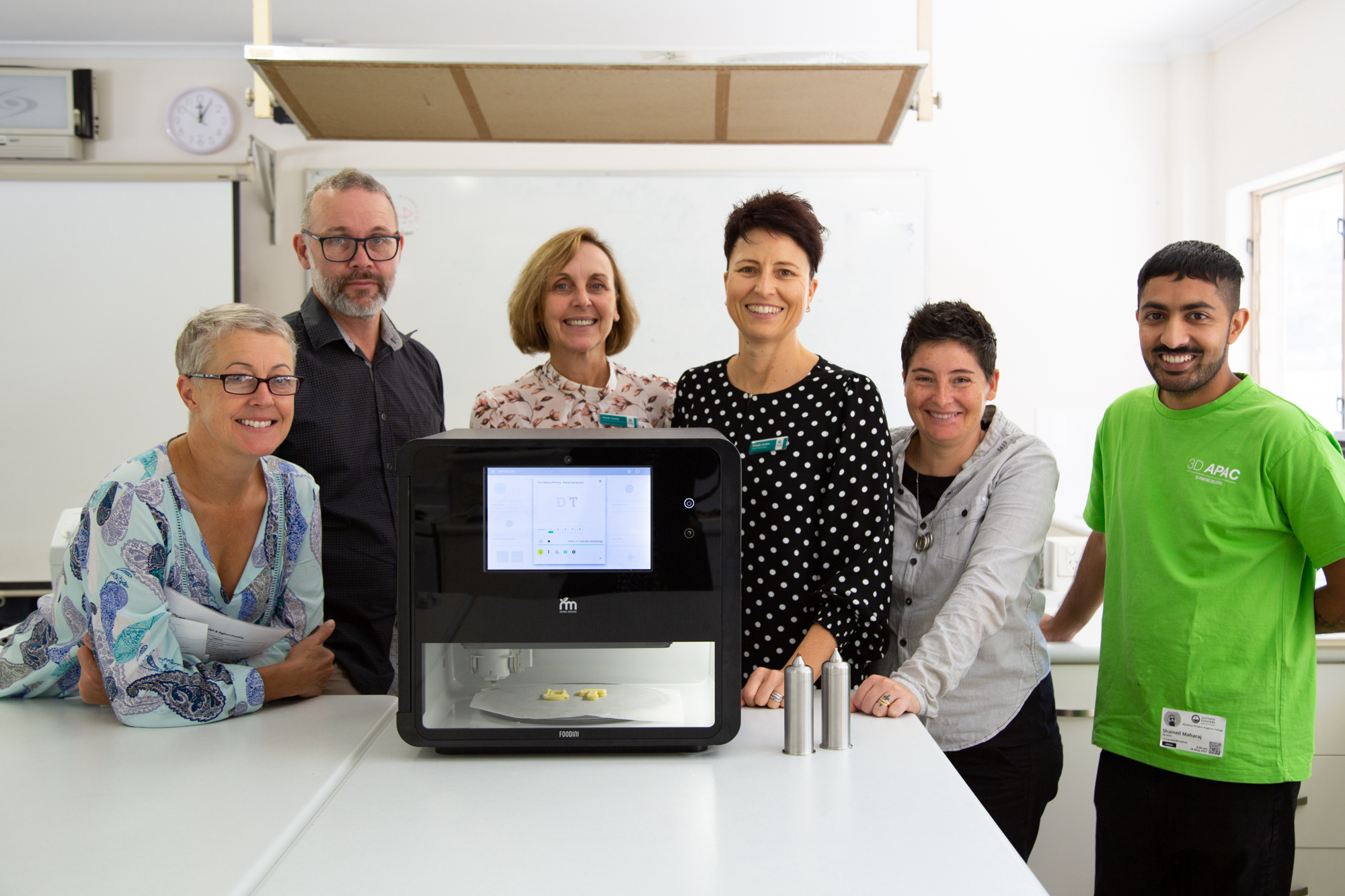'Food printing' is here, and our Design & Technologies students at Matthew Flinders Anglican College are the among the first in Queensland to be using this innovative technology.
The College recently purchased a 3D Foodini Printer kitchen appliance, one of only two in the State, and invited trainers from 3D APAC Solutions to teach staff and students how to use the machine.
Flinders Head of Design, Mrs Natalle Sutton is excited for students to use the food printer as they challenge and develop their nutritional knowledge and design thinking skills.
Design thinking in the Flinders Secondary Curriculum
Mrs Sutton said, "The 3D food printer has many applications for our Middle and Senior School curriculums.
"For example, our Years 10, 11 and 12 Design & Technologies students can use the new appliance to design their own recipe formulations and products for their Internal Assessments," she said.
"Our Year 11 students study a unit on Emerging Technologies. With this exciting machine they will begin to look at how 3D printed food can be utilised to enhance the flavour and appearance for people who will benefit from this innovation, such as aged care residents who suffer from Dysphagia, which is a difficulty in swallowing.
"Middle School students in Years 7 to 9 will also be able to explore how to design and shape their own food products and recipes. They will consider how to print with natural ingredients to make foods such as biscuits, cakes, pastries, desserts and vegetable products.
"There are also sustainable food solutions that our students can investigate to make the world a better place through enhanced food security and creating food for people in need.
"For example, how can we develop new designs that make tasty and nutritious foods, such as purees and other products, by using up existing ingredients that might otherwise go to waste?"
How the 3D food printer works
The 3D Foodini is connected to the internet and can be programmed to 'print' a variety of foods from fresh ingredients that have been prepared and inserted into the machine's capsules, which work much like a traditional printer's ink cartridges. The printer makes it quick, easy and precise to create foods like ravioli and layered biscuits that are time consuming and require close attention to assemble.
Examples of prepared foods that can be used to print new foods are pizza dough, biscuit mixture, pasta, pureed fruits, yogurt, chocolate, cooked vegetables, ravioli filling, icing and more.
Here's a short video to show the printer's capability. In this example, the printer is programmed to make a jam-filled biscuit. The printer capsules are filled with jam and cookie dough:
Feature image caption: Design and Technologies teachers at Flinders are trained in how to use the new 3D Foodini Printer

